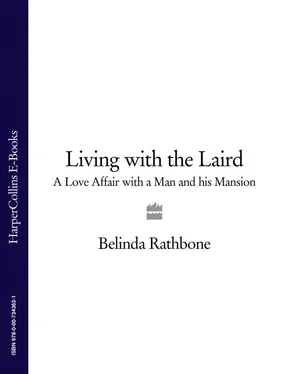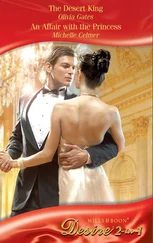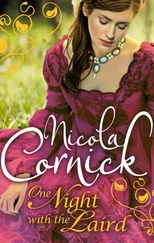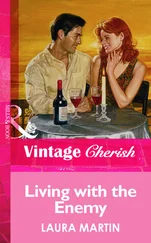Living With the Laird
A LOVE AFFAIR WITH A MAN AND HIS MANSION
Belinda Rathbone

For John and Elliot
Cover Page
Title Page Living With the Laird A LOVE AFFAIR WITH A MAN AND HIS MANSION Belinda Rathbone
Dedication For John and Elliot
Author’s Note Author’s Note THE FOLLOWING IS A TRUE STORY BASED ON my own notes taken and letters written in Scotland between 1990 and 2000. Most of the names of the people and places mentioned are factual; a few names have been changed and characters blended in consideration of their privacy. Also, in a few places, I have slightly altered the sequence of events for the sake of a more fluent narrative. … B. R.
Part One PART ONE
One It’s All Yours If You Want It
Two Heir and Spare
Three Winter Light
Four The Blessing
Part Two
Five The Garden
Six These Woods, These Cultur’d Plains
Seven Home Economics
Eight The County
Part Three
Nine Play Piece
Ten Tenants and Factors
Eleven Guests and Ghosts
Twelve The Birthday
Epilogue
Sources
Acknowledgments
About the Author
Praise
By the same author
Copyright
About the Publisher
THE FOLLOWING IS A TRUE STORY BASED ON
my own notes taken and letters written in Scotland between 1990 and 2000. Most of the names of the people and places mentioned are factual; a few names have been changed and characters blended in consideration of their privacy. Also, in a few places, I have slightly altered the sequence of events for the sake of a more fluent narrative.
…
B. R.
PART ONE
ONE It’s All Yours If You Want It
I KNEW WHEN I MARRIED THE MAN THAT I married the mansion. Though which would pose the greater challenge—my husband John, or his crumbling Georgian country house in north-east Scotland—there was no telling. There was no separating them, in mind or in fact. There was no dealing with one that did not involve the other, lurking somewhere in the background. For this was not just a house but the scene of my husband’s childhood, of his father’s childhood, of the labours and loves of his ancestors. It was the material proof of an ancient and once prominent Scottish family that is now close to extinction, and scarcely a day went by when we didn’t feel the weight of its history upon us and the mandate to hang on.
Was anybody watching? Did the family ghosts smile with approval as we wheeled out the George III silver teapot and the Old Willow pattern teacups into the drawing room every afternoon at five o’clock? Did they sigh as we dropped into armchairs with sagging springs and faded upholstery in our stocking feet and blue jeans? Did they dismay at the sight of the peeling paint in the upper corners of our stately rooms, or the cobwebs clinging to the capitals, as we made a dive for the Safeway’s shortbread in the crumb-ridden depths of a rusty biscuit tin?
We lived on the stage set of another era, or the kind of layering of several eras that happens when a family stays in one place for many generations—in this case a stylistic evolution from Regency through the post-war era. All the country house equipment was in place. The dining room cupboard stored regiments of cut glass bowls, decanters, wine glasses, demitasses, picnic boxes, saltcellars, fruit knives, dinner plates stamped with the family crest. Upstairs, the cedar-lined linen cupboard overflowed with a history of bed linen, damask table cloths, napkins and embroidered hand towels. Downstairs the old wine cellar housed an archive of old prints and family portraits, miscellaneous frayed curtains, faded furniture covers, swords, broken lamps, empty preserve jars, and prewar pots and pans. The desk drawers were stuffed with diaries, bank statements, bills, schoolboys’ letters home, assorted calling cards and dance cards dating back fifty years and more, and reams of pale blue stationery engraved on the upper right, ‘The Guynd, by Arbroath, Angus’, and on the left, ‘Telephone, Carmyllie 250’, boxed, waiting for the lady of the house, with her fountain pen.
The tool shed was a catalogue of mowers, rollers, rakes, trimmers and strimmers, loppers and scythes. What were once the laundry, the stable, the hen house and the coal store were now a jumble of cast-off furniture, farm vehicles in need of repair and building scrap. The old vaulted kitchen was the living room of the East flat. The nursery was an artist’s studio.
We had everything such a house required except for the nine servants who once took care of it. For some years Will Crighton, the retired gardener, came every morning to count the animals in the fields and every few days to mow the three and a half acres of lawn around the house. But I gave up trying to get anyone to help me clean. For I was the housekeeper and the chambermaid, the cook and the nanny. John was the gardener, the plumber, the launderer, and the odd-job man. Still, at the end of the day, as we sat fireside in the library amidst volumes such as The Gardener’s Chronicle, Burke’s Peerage and Byron’s leatherbound Complete Poetical Works and discussed what to do about a broken stone wall or an untidy tenant, he was the laird (the twenty-sixth), and I was the chatelaine.
WE MET IN VANCOUVER, at a cousin’s wedding, in July 1990. The bride, my cousin Pippa, was equally John’s cousin, as she was the daughter of my uncle and his aunt. Both of us had been especially urged to make the trek west for the wedding, I from New York and John from London, as the last of Pippa’s assorted cousins to remain unmarried. We had met once before, as children; our families had converged in Italy back in 1954. But the age difference between us—thirteen and a half years—was then enough to make us almost unaware of each other. I was a toddler when he was a teenager.
At fifty-three John was still a bachelor. At thirty-nine so was I. Strategically, the family had arranged for us both to be put up for the weekend with the neighbours, an elderly Mr and Mrs Hamilton. When my taxi pulled in from the airport at dusk, a lanky dark-haired figure lurched out of the house to help me with my bags.
This must be John.
Inside, over a drink with our hosts, I watched his long, lean figure unfold awkwardly into a chair, like a youth still searching for the right fit, as we attempted to ground ourselves in relation to our Canadian cousins and catch up on the last thirty-something years.
His talk was witty, ironic and charged with nervous energy. As he darted nimbly from one subject to the next, he revealed an upper-class British background, but without the superficial polish. If he was the product of a system at all he was an errant one. He used words like salubrious with ease and relish, but he also peppered his speech with colloquial British expressions such as ‘naff’ and ‘bloke’ that gave it a tougher edge. Though his accent was English his features were somehow of a rarer breed or more ancient genesis. His long face, though lined, showed the youthful softness of a moist climate. His high, bony cheeks were shot through with the ruddy rose that comes from the chill of stone buildings in winter, and his greyblue eyes beamed steadily out of their sheltered hollows. When he laughed you could see the gold in his back teeth.
We sat together at the Catholic wedding service the next day, whispering expressions of impatience with the Latin. During the reception at the Capilano Golf Club John hovered, bringing me canapés and topping up my champagne. After the wedding some of us went out for supper at a noisy pub in downtown Vancouver, where we ate hamburgers and shouted and laughed over the din of the loud music. John pulled me on to the dance floor and we rocked and rolled, losing track of our party in the reeling crowd.
Читать дальше













